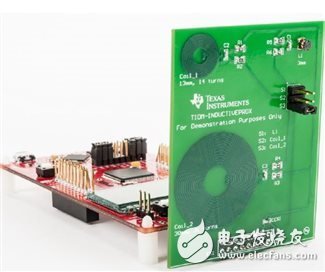Inductive proximity sensors can be used for non-contact detection of metals near LC sensors. These inductive sensing solutions enable the counting of tasks in presence detection and factory assembly lines without the influence of non-inductive materials such as oil, water, dirt or dust. Perhaps one thing you do not realize is that the ultra-low-power MSP430FR6989 microcontroller (MCU) includes an integrated extended scan interface (ESI) peripheral (used as an analog front end (AFE)) for direct connection to PCB coils. To achieve low cost and low power inductor proximity sensing.

LC sensors are commonly used for applications related to inductive sensing. After charging the capacitor with a short pulse, the LC sensor oscillates and the signal voltage drop is attenuated. Due to the energy absorption caused by the eddy currents in the metal, metal objects will cause the signal to decay faster. This faster decay allows the detection of metal near the sensor. This TI Design reference design, TIDM-INDUCTIVEPROX, shows the hardware and software required to fully utilize the advanced ESI peripherals in a single-chip inductive proximity sensing implementation. This solution is also very energy efficient, requiring only a few microamps of current. In this configuration, the integrated analog front end is used to emulate LC sensors, sense signal levels, and convert them to digital displays. This data is then stored in a preprocessing element and analyzed using a processing state machine.
By connecting an LC sensor to the ESI pin on the bottom of the board, this type of application can be implemented on an MSP-EXP430FR6989 MCU LaunchPadTM Development Kit. The TI Design reference design mentioned above shows multiple LC sensor variables to demonstrate the effect on output signal frequency and attenuation rate.
If an application requires higher resolution (that is, determining the exact distance of the metal versus simply detecting whether the metal is within the range), an inductor-to-digital converter such as the LDC1612 or LDC1101 can be added to the system. With this two-chip solution, the MSP430FR6989 microcontroller can be used to keep the system in standby until the metal is detected and then wake up the high-resolution LDC IC to capture accurate measurements.
A TPU Screen Protector made of the super toughness of the honeycomb structure. Its unique ultra-soft properties allow it to cover the most complex curves and contours in a device.
The self-healing design of the Hydrogel Screen Protector can protect the display screen of the device from damage, leave no air bubbles, and maintain the sensitivity of the touch screen. Advanced anti-fingerprint and dust- and oleophobic overlays keep your screen smudge- and dirt-free. This overlay is also important in providing maximum touch sensitivity for improved high-speed glide and optimal touch response.
The optical transparency of the Hydrogel Film is more than 90%, showing you the most original screen color and bringing the most realistic visual experience.
If you want to know more about the product information of the Hydrogel Screen Protector for vivo, please click the product details to view the parameters, model, picture, price and other information of the vivo Screen Protector.
Whether you are a group or an individual, we will do our best to provide you with accurate and comprehensive information about Hydrogel Screen Protectors!
Screen Protector For vivo,Hydrogel Screen Protector For vivo,Hydrogel Film for vivo,TPU Screen Protector For vivo
Shenzhen Jianjiantong Technology Co., Ltd. , https://www.jjttpucuttingplotter.com